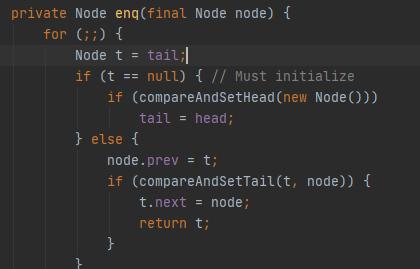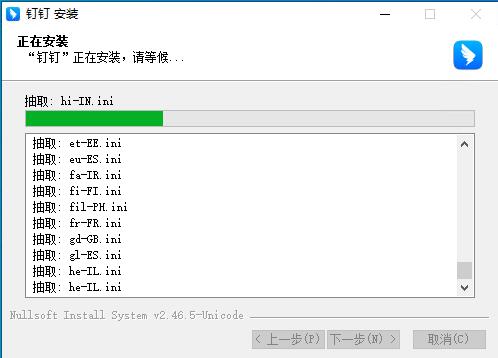
Linux线程同步方法:互斥锁实现
时间:2023-05-09 来源:网络 人气:
在多线程编程中,线程同步是一个非常重要的概念。如果多个线程同时访问共享资源,可能会导致数据不一致等问题,因此需要使用线程同步来保证程序的正确性。本文将介绍几种常见的线程同步方法,并结合Linux下的实现方式进行分析。
一、互斥锁
互斥锁是最常用的线程同步方法之一。它可以保证在任意时刻只有一个线程访问共享资源,其他线程需要等待锁释放后才能继续执行。在Linux下,可以使用pthread_mutex_t结构体实现互斥锁。
线程同步的方法有哪些?Linux下实现线程同步的三[荐]_线程池的实现_linux线程间同步方式
下面是一个简单的例子,演示了如何使用互斥锁来保护共享资源:
c++
#include
#include
pthread_mutex_tmutex;
intcount=0;
void*thread_func(void*arg){
for(inti=0;i<100000;i++){
pthread_mutex_lock(&mutex);
count++;
pthread_mutex_unlock(&mutex);
}
returnNULL;
}
intmain(){
pthread_tthreads[10];
pthread_mutex_init(&mutex,NULL);
for(inti=0;i<10;i++){
pthread_create(&threads[i],NULL,thread_func,NULL);
}
for(inti=0;i<10;i++){
pthread_join(threads[i],NULL);
}
pthread_mutex_destroy(&mutex);
printf("count=%d\n",count);
return0;
}
在上面的例子中,我们定义了一个全局变量count线程同步的方法有哪些?Linux下实现线程同步的三[荐],并创建了10个线程来对它进行加1操作。为了保证线程安全,我们使用了互斥锁来保护count变量。在每个线程中线程同步的方法有哪些?Linux下实现线程同步的三[荐],我们先调用pthread_mutex_lock函数来获取锁,然后对count变量进行操作,最后调用pthread_mutex_unlock函数释放锁。
线程同步的方法有哪些?Linux下实现线程同步的三[荐]_linux线程间同步方式_线程池的实现
二、条件变量
条件变量是另一种常见的线程同步方法。它可以使线程在某个条件满足时才继续执行。在Linux下,可以使用pthread_cond_t结构体实现条件变量。
下面是一个简单的例子,演示了如何使用条件变量来控制线程的执行顺序:
线程池的实现_linux线程间同步方式_线程同步的方法有哪些?Linux下实现线程同步的三[荐]
c++
#include
#include
pthread_mutex_tmutex;
pthread_cond_tcond;
intcount=0;
void*thread_func1(void*arg){
for(inti=0;i<100000;i++){
pthread_mutex_lock(&mutex);
count++;
if(count==10000){
pthread_cond_signal(&cond);
}
pthread_mutex_unlock(&mutex);
}
returnNULL;
}
void*thread_func2(void*arg){
pthread_mutex_lock(&mutex);
while(count<10000){
pthread_cond_wait(&cond,&mutex);
}
printf("count=%d\n",count);
pthread_mutex_unlock(&mutex);
returnNULL;
}
intmain(){
pthread_tthread1,thread2;
pthread_mutex_init(&mutex,NULL);
pthread_cond_init(&cond,NULL);
pthread_create(&thread1,NULL,thread_func1,NULL);
pthread_create(&thread2,NULL,thread_func2,NULL);
pthread_join(thread1,NULL);
pthread_join(thread2,NULL);
pthread_mutex_destroy(&mutex);
pthread_cond_destroy(&cond);
return0;
}
在上面的例子中,我们定义了一个全局变量count,并创建了两个线程。其中,线程1会对count变量进行加1操作,当count变量等于10000时,它会调用pthread_cond_signal函数来通知线程2可以继续执行了。而线程2会等待条件满足后再继续执行。在每个线程中,我们都使用互斥锁来保护共享资源。
三、信号量
线程池的实现_线程同步的方法有哪些?Linux下实现线程同步的三[荐]_linux线程间同步方式
信号量也是一种常见的线程同步方法。它可以控制多个线程对共享资源的访问数量。在Linux下,可以使用sem_t结构体实现信号量。
下面是一个简单的例子,演示了如何使用信号量来控制多个线程对共享资源的访问:
c++
#include
#include
#include
sem_tsem;
intcount=0;
void*thread_func1(void*arg){
for(inti=0;i<100000;i++){
sem_wait(&sem);
count++;
sem_post(&sem);
}
returnNULL;
}
void*thread_func2(void*arg){
for(inti=0;i<100000;i++){
sem_wait(&sem);
count--;
sem_post(&sem);
}
returnNULL;
}
intmain(){
pthread_tthread1,thread2;
sem_init(&sem,0,1);
pthread_create(&thread1,NULL,thread_func1,NULL);
pthread_create(&thread2,NULL,thread_func2,NULL);
pthread_join(thread1,NULL);
pthread_join(thread2,NULL);
sem_destroy(&sem);
printf("count=%d\n",count);
return0;
}
线程同步的方法有哪些?Linux下实现线程同步的三[荐]_线程池的实现_linux线程间同步方式
在上面的例子中,我们定义了一个全局变量count,并创建了两个线程。其中,线程1会对count变量进行加1操作,而线程2会对count变量进行减1操作。为了保证线程安全,我们使用信号量来控制同时只有一个线程对count变量进行操作。
总结
本文介绍了三种常见的线程同步方法:互斥锁、条件变量和信号量,并结合Linux下的实现方式进行分析。在多线程编程中,选择合适的线程同步方法非常重要,可以帮助我们避免许多潜在的问题。

相关推荐
教程资讯
教程资讯排行

系统教程
-
标签arclist报错:指定属性 typeid 的栏目ID不存在。












